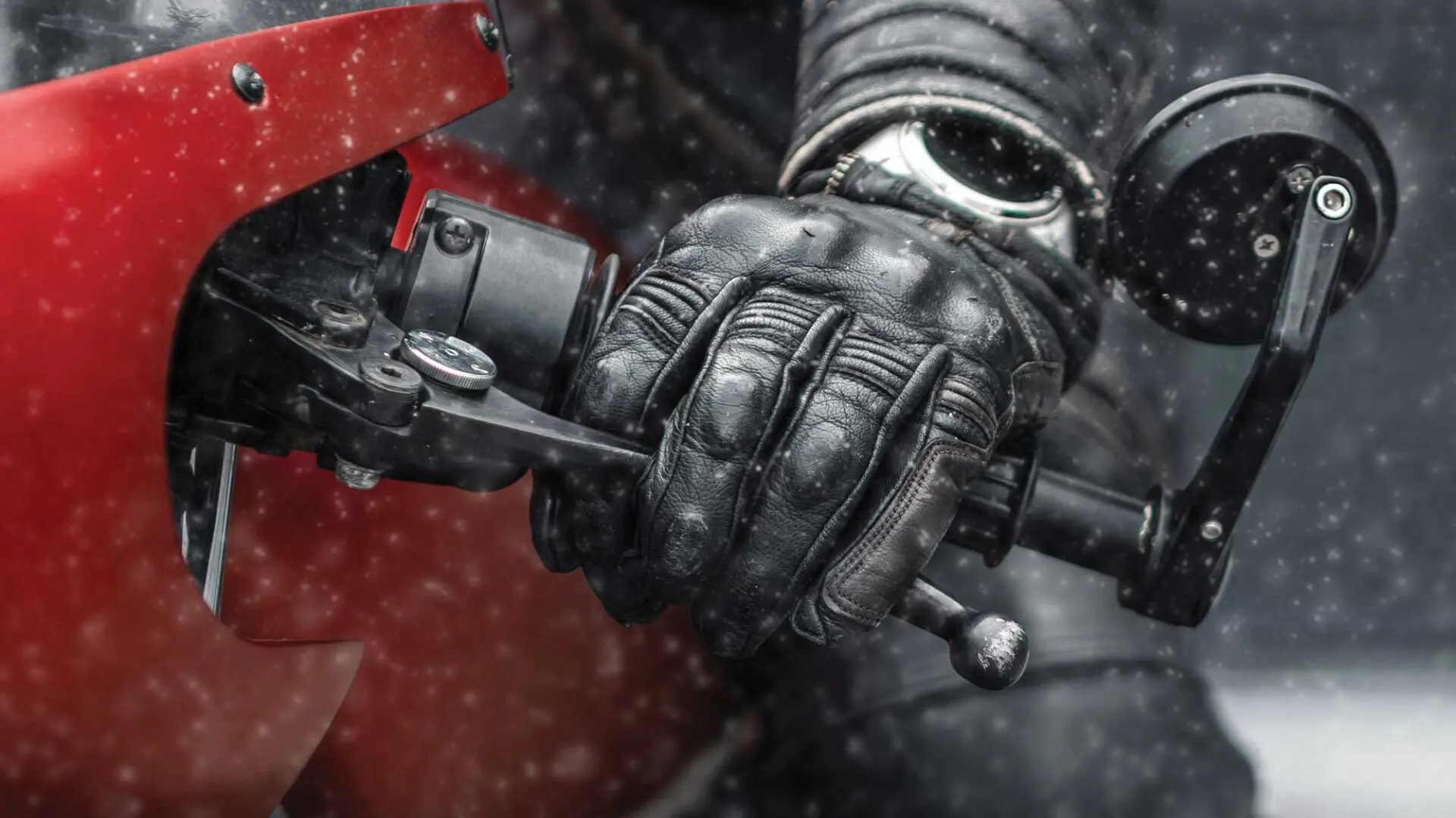Winter Motorcycle Rides Require Preparation and Caution
By MS. PAULA COLLINS, STAFF WRITER
Unpredictable weather patterns and lower temperatures combine to make this season quite challenging for motorcycle riders. It is imperative to dress properly and prepare for weather-related hazards that can reduce traction on the roadway.
FUNDAMENTAL PREPARATION
The preparation tips below should be taken into account before every ride.
- Make sure you properly maintain your bike with the usual checks. If you have been riding on salted roadways, wash all traces of salt from the bike and tires.
- Always check tire pressure. It can drop by 2 to 3 pounds per square inch on cold mornings, which is enough to make the steering and brakes feel heavy. All-season tires are recommended. Let the tires warm up at low speeds before hitting the road.
- Consult a reputable weather app. A reliable weather app can provide hour-by-hour forecasting.
- Dress appropriately—make sure you are insulated, windproofed, and dry. Protect your body with base thermal layers of clothing and cold weather gear designed specifically for winter riding. Wear a full-coverage helmet with vents and Bluetooth connectivity (so you can stay in contact with other bikers and the outside world), a neck gaiter, and windproof and waterproof outer layers. Eliminate any sources of drafts. It is a good idea to carry extra layers, spare gloves, socks, and handwarmer packets in the saddlebags. If you frequently ride in the winter, heated jackets, pants, and gloves that plug into your bike are a good investment.
- Consider purchasing a heated seat and heated handlebars. Both can help you stay comfortable if you plan to do a lot of winter riding.
- Pack water and nutritious, high-protein snacks such as beef jerky and nuts. These items will keep you hydrated and maintain your energy level while riding.
REASONS TO POSTPONE A RIDE
Sometimes a ride is not meant to be. Make sure to approach your rides with a “better safe than sorry†attitude by taking a rain check should you encounter the following scenarios:
- A winter storm is moving in.
- Severe weather alerts apply to where you plan to ride.
- Weather conditions are causing accidents.
- You do not have enough protective winter gear.
- You have not done a maintenance check on your bike.
RESPECT THE COLD
When your core body temperature drops even slightly, it can adversely affect your judgment. In addition, your body tenses, making the bike difficult to control. Cold, numb hands are not able to control the brake and throttle effectively. Watch for these four progressive warning signs and be ready to stop and warm up:
- Cold hands and feet indicate the body is moving blood to your major organs to protect them.
- Shivering is your body’s attempt to warm itself.
- Shallow or slow breathing are signs of advancing hypothermia.
- Loss of coordination, poor throttle control, and confusion are also symptoms of hypothermia.
Take frequent breaks. Stop for 5 to 10 minutes every hour to walk around and stretch. This activity will help you stay warm and avoid fatigue.
The wind chill chart on this page shows wind (riding) speed vs. air temperature.
RESPECT THE ROADWAY
Reduced visibility and loss of traction can occur from pop-up snow showers, freezing rain, or fog. At other times, roads may appear clear of ice and snow, but there may be black ice patches or frost in shaded areas, so it pays to be vigilant. Following are some tips for such conditions:
- Train yourself to continuously scan ahead. It will improve your ability to interpret the roadway and give you more time to develop a plan of action. How might this work? You notice that a vehicle is approaching around a curve. You also note that a tree is hanging over your lane and casts a shadow on the roadway. You approach cautiously and intentionally slow down because the roadway could be icy, and the oncoming vehicle might lose control.
- Ride on the portion of the road with the most traction. Avoid areas worn smooth by cars and any area in shadow.
- Use caution where the roadway has been salted or sanded. This material can result in reduced traction.
- Pay attention to car exhausts. Billowing exhaust fumes indicate the car was probably just started, and the driver could be distracted while adjusting to the road conditions.
- Ride in a group. There is safety in numbers, especially when you are riding in winter.
- Keep your phone charged, and make sure it is protected from snow and moisture and stays warm.
- Do not ride on snow or ice-covered roads. Find a safe place to park the bike and wait out the storm or find another way home.
Winters rides can be exciting but also challenging and not for everyone. Your safety depends on a healthy respect for the roadway and exercising appropriate precautions. Remember to dress for the extremely cold temperatures you may encounter and know the signs of advancing hypothermia and frostbite. Preparing for winter conditions will go a long way toward keeping you safe and comfortable on your ride.


